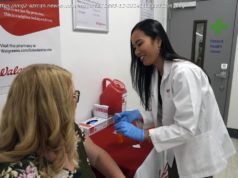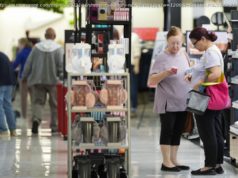Extended the pause on student-loan payments
On his first day in office, Biden asked the Education Department to extend the pause on federal student …
Extended the pause on student-loan payments On his first day in office, Biden asked the Education Department to extend the pause on federal student loan payments through September 30,2020, following Education Secretary Betsy DeVos‘ extension of it through the end of January 2020. This was accompanied by a 0% interest rate during that time period. National Economic Council Director Brian Deese said at the time that the extension would alleviate burdens on many households. „In this moment of economic hardship, we want to reduce the burden of these financial trade-offs,“ Deese said. This extension, however did not apply to the more than 7 million borrowers with loans held by private companies. In August, nearly two months before the pause was set to expire, Education Secretary Miguel Cardona announced the pause would be extended through January 31,2022. This is the fourth extension of the pause during the pandemic, and Cardona said in a statement that it will be the „final“ one. „The payment pause has been a lifeline that allowed million of Americans to focus on their families, health, and finances instead of student loans during the national emergency,“ Cardona said. Despite the „final“ language, though, Biden surprised borrowers on December 22 when he extended the pause through May 1, allowing for 3 months of additional relief. This pause was due to rising COVID-19 cases caused by the Omicron variant. And on April 5, 2022, Biden used his authority for his fourth time to once again extend the student-loan payment pause an additional four months, through August 31. He said that the country is still recovering from the pandemic, and forcing borrowers to resume payments will disrupt recovery and cause many borrowers to fall into delinquency and default. Expanded the scope of the student loan payment pause Biden’s payments pause on student loans initially only applied to borrowers with federal loans, meaning those with privately-held loans had to continue making payments during the pandemic. But on March 29, Cardona expanded the scope of that pause to apply to loans under the Federal Family Education Loan (FFEL) Program, which are privately held. This helped 1.14 million additional borrowers. The FFEL Program ended in 2010, but according to Education Department data,11.2 million borrowers still have outstanding FFEL loans totaling over $248 billion. And while the department acquired some of the outstanding FFEL loans, many are still privately owned and were not affected by the earlier pause on federally owned student loan payments. According to a press release, any FFEL borrower who made a payment in the past year will have the option to request a refund. Asked the Justice and Education Departments to review his authority to cancel student debt At a CNN town hall in February, Biden said he doesn’t have the executive authority to cancel up to $50,000 in student debt per person, but said he is prepared to cancel $10,000 — something he campaigned on. The same month, White House Press Secretary Jen Psaki told reporters that Biden will ask the Justice Department to review his legal authority to cancel $50,000 in student debt. Biden’s administration has not yet commented on the status of the Justice Department’s review. However, Insider reported that he has yet to deliver on that campaign promise, and while Biden said he would support legislation brought to him to cancel $10,000 in student debt, Democrats argue that legislation takes too long, and the president can cancel debt immediately using his executive authority. „We have a lot on our plate, including moving to infrastructure and all kinds of other things,“ Warren said in a February press call. „I have legislation to do it, but to me, that’s just not a reason to hold off. The president can do this, and I very much hope that he will.“ And White House Chief of Staff Ron Klain told Politico in April that Biden had asked Cardona to create a memo on the president’s legal authority to forgive $50,000 in student loans per person. Biden will „look at that legal authority,“ Klain said. „He’ll look at the policy issues around that, and he’ll make a decision. He hasn’t made a decision on that either way, and, in fact, he hasn’t yet gotten the memos that he needs to start to focus on that decision.“ Reversed a DeVos methodology for determining loan forgiveness On March 18, Cardona reversed a Trump-era policy that gave only partial relief to defrauded students. The debt-cancellation methodology, known as the „borrower defense to repayment“ — approved by Education Secretary Betsy DeVos — compared the median earnings of graduates with debt-relief claims to the median earnings of graduates in comparable programs. The bigger the difference, the more relief the applicant would receive. But compared to a 99.2% approval rate for defrauded claims filed under President Barack Obama, DeVos had a 99.4% denial rate for borrowers and ran up a huge backlog of claims from eligible defrauded borrowers seeking student debt forgiveness. Cardona said that process did not result in appropriate relief determination and needed to be reversed, and a judge recently ruled that DeVos must testify over why so few borrowers were approved for loan forgiveness.
Start
United States
USA — Financial Here's everything Biden has done so far to address the $1.7 trillion...






